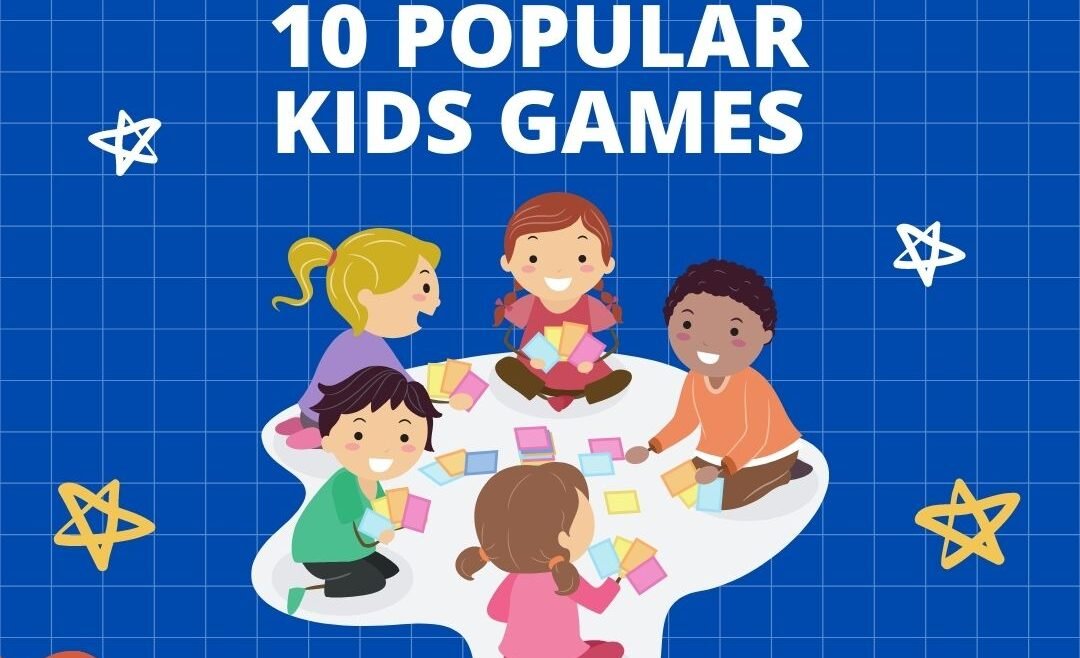Kids games are considered any game that is played primarily by children. Many of them are often referred to as traditional kids games , or even just traditional games. Popularity, especially over time, can be difficult to determine because it changes with every generation, but some stand out as classics which have lasted throughout generations. Many of the most popular kids games today are actually based on older ones, which were developed hundreds or thousands of years ago.
Here are ten popular kids games from around the world:
1) Tiddlywinks (England – late 1800s): Tiddlywinks is a classic table-top competitive game that is similar to marbles or cup and ball, but is much easier to play. The game consists of a pile of tiny disc-shaped pieces of plastic or metal called winkles , which are then flicked into one of the two rows marked on either side of the playing surface (traditionally now often made out of cardboard). Points are awarded based on where your winkles land relative to those already in that row.
2) Hopscotch (England – 1000s): Hopscotch is an ancient game traditionally played by young children using chalk on certain patterns drawn onto the pavement. Depending upon where you live it may be known as “Horn Scoring” rather than Hopscotch due to its similarity with another very popular kids game called “Horn,” in which players throw and catch a small object known as a horn .

3) Jacks (United States – 1800s): Jacks is the quintessential American ball and paddle game. It takes several people to play, each of whom has their own unique task: one person holds all the jacks in one hand, while another throws a ball at them. The aim is to catch the ball on one bounce per jack it hits, collecting that jack before catching the ball again.
4) Chinese Chequers/Shi Chi Mei (China – 1400s): This very popular traditional Asian board game is similar to checkers or draughts , but with many added complexities. Two players compete against each other, and use counters (which are removed and replaced as the game progresses) to form closed shapes on a board consisting of 19×19 points. Points are earned based on where your counters end up, with more earned for completing larger shapes or multiple smaller shapes in one move.
5) Snakes and Ladders (India – 100s): Snakes and Ladders originated in India as a morality teaching tool, but was adapted by Milton Bradley during the Victorian era into its current version. It consists of a grid-like board depicting various ladders leading upwards towards virtue and snakes leading downwards to vice. A player rolls a dice and moves across the board accordingly – plus an additional step if they land on certain squares – until reaching the final space on either a ladder or a snake. Players earn points based on how many spaces they reached while going up a ladder, and lose them if they land on certain squares going down a snake.
6) Australian Bullrush (Australia – 1900s): One of Australia’s most popular kids games is similar to capture the flag , but is instead played with large balls called bullrush bails . Two teams attempt to carry their team’s bail through the opposition’s goal line before returning it to their own line without being tagged by the opposition. This game can be played in several different formats depending upon age and ability, and is extremely popular in most rural areas where rugby isn’t readily available during winter seasons.
7) French Bagatelle (France – 1700s): While most kids games are designed to be simple and fast-paced, this popular game has a much more laid back pace. Played with small wooden pins called bagatelle and a large table known as the board , it is similar in concept to miniature pool or snooker . Players shoot their bagatelle balls at the pins on the board, knocking them over into their own goal area for points. When all of your bagatelle balls are in your section, you tap the center peg to win the game!
8) Hop Scotch (Scotland – 1500s): This very old Scottish game is played by two people with exactly 20 pieces each per round (or many more if you’re playing with larger groups of people). Players hop over the pieces and land on them, either pushing them ahead or backwards depending upon where their opponent is standing. The winner is the person who gets rid of all their pieces first!
9) Marbles (United States – 1800s): This very popular kids game originated in Ancient Greece and Rome , but was brought to America by European settlers. It consists of each player placing a small object called a shooter into an area known as the ring . They then attempt to knock out their opponent’s shooters using other smaller objects called out shots . Whoever has lost all of their shooters loses that round. There are several variations that involve different-sized boards, more players, and different types of shooters.

10) Japan’s Daruma-san/Hina Matsuri (Japan – 1600s): This popular kids game is similar to musical chairs , but is often played with dolls called Daruma-san that have weighted bottoms so they always stand upright no matter where you place them. In this version of the kids game, a group of children circle around a set number of darumas – usually about six – and start the music going before ceasing it suddenly after a short time. The children then scramble around trying to sit on a daruma’s lap before the music starts again! Whoever loses has to forfeit one of their dolls, and whoever is left with all their dolls at the end wins!



